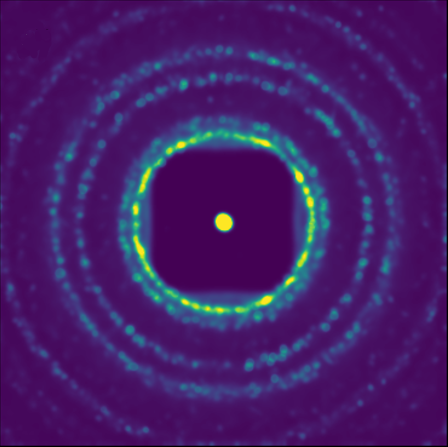Electron microscopy is one of the key analytical methods for studying the structure of crystalline materials. A modern approach known as 4D Scanning Transmission Electron Microscopy (4D-STEM in SEM) combines the advantages of a scanning electron microscope with a pixelated detector, which makes it possible to record a 2D diffraction image (diffractogram) at every point of the sample. This produces a unique 4D dataset that captures detailed information about the local structure and orientation of crystals.
By simple processing of such data, one can obtain, for example, powder diffraction patterns, which in the past could only be measured using much more expensive transmission microscopes. Even more interesting, however, is the possibility of using modern artificial intelligence methods for the automatic detection, segmentation, and classification of diffraction patterns, which opens the way to reconstructing spatial maps of crystal orientation and distribution within samples.
The aim of this thesis is to design and experimentally validate deep learning methods for the analysis of 2D diffractograms, thereby enhancing the possibilities for quantitative analysis of data obtained using the 4D-STEM technique.
The student will have a unique opportunity to work in an interdisciplinary team of scientists from three institutes of the Czech Academy of Sciences: UTIA – methods of machine learning and image processing, IMC – crystallography and experimental data, and ISI – electron microscopy and detection techniques.
Supervisor: Filip Šroubek
Co-supervisor: Miroslav Šlouf, Institute of Macromolecular Chemistry, Czech Academy of Sciences




